For the better part of the past ten years, Apple’s in-house A-series processors powering iPhones and iPads have had a definitive edge over rivals from Qualcomm, Samsung, and MediaTek. With the iPhone 14 series hitting the shelves in 2022, the performance gulf has only widened this year.
It’s somewhat astonishing to see just how powerful these ‘smartphone chips’ are. The entire transition away from the x86-based Intel ecosystem to self-designed M-series processors for Macs happened on the foundations of a developer kit powered by the A12Z chip, a processor fitted inside the 2020 iPad Pro.

This year, Apple again sat at the vanguard of chip innovation with the A16 Bionic, the world’s first mobile SoC based on the next-gen 4nm fabrication process. Apple made its customary bold promises about the A16 Bionic’s superiority in its slick keynote presentation and the carefully worded newsroom post.
Apple claims that the new silicon comes armed with an “accelerated 5-core GPU with 50 percent more memory bandwidth — perfect for graphics-intensive games and apps.” The reality is not too far off, at least on paper.
Oodles of power, little space to vent
When I embarked on a marathon gaming session involving every demanding title that I could find on the App Store, I expected nothing but class-leading performance. I did get a taste of that class-leading performance, but only in short bursts. That’s because the iPhone 14 Pro is held back by the same problem as the Google Pixel 6a.

Both phones feature a processor that is too powerful for the heat management system inside. Apple has made changes to the thermal hardware this year, and teardowns of the 14 Pro show what exactly is going on under the hood.
For yet another year, Apple has skipped the more efficient vapor chamber cooling system in favor of graphite sheets. That’s not good news, especially when the processor has made yet another fabrication leap that offers a 40% bump in CPU power while graphics memory bandwidth has gone up by a 50% margin.
For thermal management, however, Apple has merely played around with graphite sheets, hoping that they will do a dramatically better job this time around. Unfortunately, they don’t. The iPhone 13 Pro was no thermal management champion, but the iPhone 14 Pro doesn’t fare any better under stress — especially when it comes to playing games.
A gaming beast that literally brings the heat
I fired up games expecting the iPhone 14 Pro to crush them. And it did. Except for outlier scenarios where the developer hasn’t enabled one or two of the peak graphics presets to keep things from going haywire, the Apple flagship had absolutely no trouble delivering the smoothest performance you can get on a smartphone.

If you have keen eyes, you will easily discern the stunning clarity of shadow and reflection rendering, especially if you’ve played games on a mid-range Android phone. I compared the iPhone 14 Pro side by side with the Samsung Galaxy S22 Ultra and noticed that the transitions just felt a tad smoother on the Apple device.
Frame rates were consistently at the top end of the permissible limit, and there was no absolutely no trace of stuttering or frame drops. That is, until you go past the mark of about 20-30 minutes into your gaming marathon.
In a handful of games like Call of Duty: Mobile and Genshin Impact, stutters become apparent during intense combat scenes. Of course, they cost me a precious few seconds, triggering an unceremonious end to my team shootout campaign. Notably, the heating is not merely limited to gaming sessions.
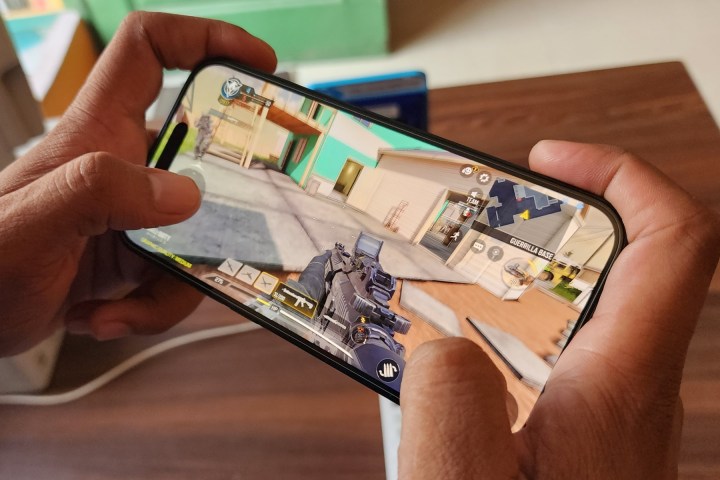
In fact, the iPhone 14 Pro started heating a little too aggressively even while downloading game assets. I first noticed this oddity when the phone started installing game files worth about 14GB in Genshin Impact. It appears that processing those resources in the background was stressing the processor out.
Now, unlike Android phones, there isn’t a performance analysis system like third-party FPS overlay and system resource analysis apps. Apple won’t even let you check the CPU or battery temperature levels. I could only check the frame rate stability of a few games using a barebones open-source GitHub project called trdrop, which analyzes gameplay footage to show a rough fps chart.
In general, demanding games set to 60 fps output deliver anywhere between 45-59 fps under moderate graphics settings. However, if you go Ultra or Extreme, the actual output drops to around 40-45 fps. These are just numbers for the sake of testing, and won’t affect the actual gaming experience to the naked eye.

For games that promise a 120fps mode on the iPhone 14 Pro’s ProMotion display, a true 120fps experience is only available if the graphics settings linger in the low to moderate range. For anything beyond that, the real output jumps between 60 fps and 90 fps.
For less demanding games, especially indie titles, actual frame rates remain at a stable 60 fps even at high graphics settings. At the end of the day, the frame rate stability depends on how demanding the game is, and the graphics settings chosen by the player.
In the case of games like Diablo Immortal, which allow you to play the early stages while more assets for subsequent missions are installed in a staggered fashion, there was again stuttering. In a gaming session that lasted about 25 to 30 minutes, I noticed the character suddenly slowed down the pace of walking or attacking, almost like a short-lived spell of slo-mo capture.

At first, it seemed like a network latency issue, but an Ookla speed test told me that the network ping rate was not a problem, and the downlink rate of around 350Mbps was also business as usual. I tried a fresh install on the vanilla Galaxy S22 and OnePlus 10 Pro and played the first few stages while the rest of the game assets were downloading in the background.
Interestingly, I didn’t come across any random momentary slowing down on Android flagships. But this was limited to only a few games with a very specific asset processing pipeline. Once the files are downloaded, the games run without any stutter on the iPhone 14 Pro. But the joy is short-lived.
The iPhone 14 Pro has uncharacteristically bad thermal management hardware. Every single demanding game that I played for 30 minutes, or more, turned the phone into a piping-hot glass-and-metal sandwich. The heat is primarily localized to the area underneath the camera hump.
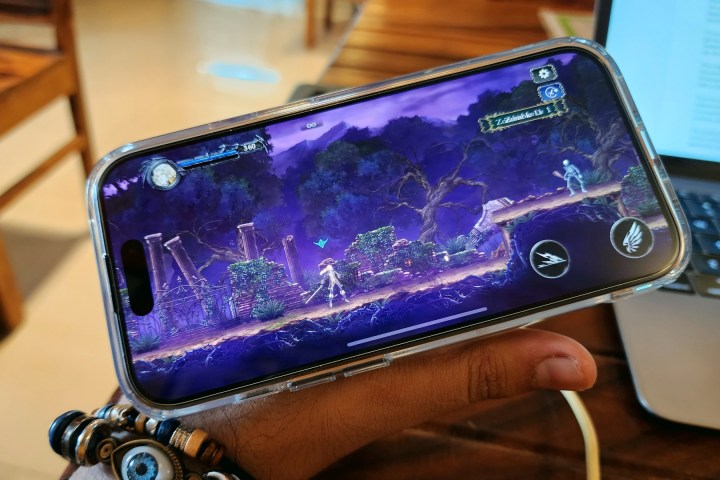
Plus, that shiny surgical-grade stainless steel frame also gets hot rather quickly, and definitely doesn’t help with the heat dissipation, especially with your warm hands gripping the phone from all sides. I regularly recorded the rear panel temperature in the 38 to 42 degrees Centigrade (aka 100 to 107 degrees Fahrenheit) range after a gaming session lasting around 30 to 40 minutes. In fact, I could even feel the warmth from over the ESR silicone clear case protecting the phone.
But the heat is not localized to the frame and rear portion. The screen gets hot too, especially if you’ve cranked the brightness all the way up while playing games outdoors. To cope with it, I noticed that the iPhone 14 Pro routinely drops the brightness if your gaming session lasts more than 30 to 40 mins, or even quicker with demanding games.

I came across this sudden drop in brightness while playing Genshin Impact and Call of Duty: Mobile most frequently. Once that happens, the phone takes a healthy few minutes for the screen to return back to its eye-searing glory. But just in case you were wondering, a sudden drop in screen brightness is not a bug.
Apple itself claims that the screen brightness is lowered as a measure of managing heat dissipation when the device is under load. It can also happen while capturing videos, streaming high-resolution content, or using the device under sunlight for prolonged periods.
As long as you keep your gaming sessions limited to a cooled space, you’ll have a blast. Just don’t sit under the sunlight and try to snipe an army of opponents in PUBG: Mobile for a few Battle Royale rounds.
Apple Arcade is the secret sauce
I’ve never had the courage to spend money on a subscription service for mobile games. I already spend on Xbox Game Pass, Netflix, Amazon Prime, and YouTube Premium each month. Adding one from Apple doesn’t make a lot of sense. Plus, there’s always this meaningless stigma of “mobile gaming is not real gaming” that kept me from trying Apple Arcade.
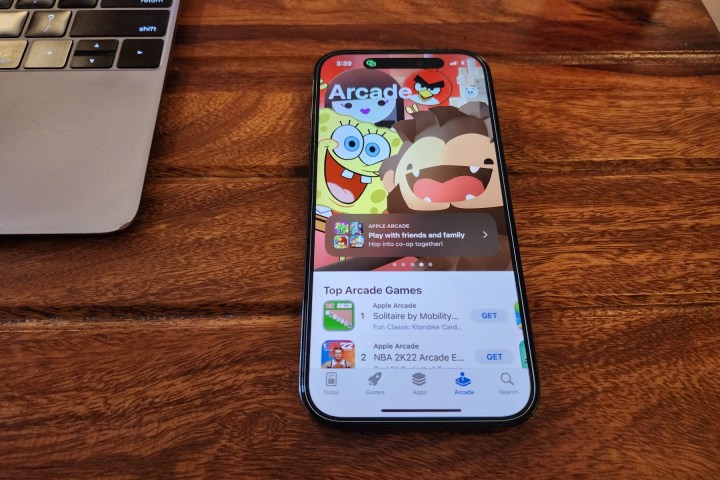
I finally budged, when Apple generously bundled 3-month of free Apple Arcade with my $1,800 phone (Yeah, iPhones come with a substantially higher price tag in almost every market that isn’t the U.S.).
Right off the bat, the quality of games bundled with Apple Arcade is noticeably better than a majority of tiles on the App Store. The visuals are just more realistic, the sound fidelity is richer, and the haptics feel a lot more refined and well-synced. More importantly, these games don’t trigger throttling in the same way as the non-Arcade titles.
Stutters are rare, and frame rate stability is also better. It’s as if Apple set a much higher quality baseline for games before they’re considered worthy of a seat in the Arcade auditorium.
For the longest time, I thought Asphalt 9 was among the best racing games on mobile, until I came across Gear.Club Stradale. This Arcade game is a revelation in terms of visual realism. The environment design, light reflections off the car, the surface details, and smooth vehicle maneuvering are simply way too good.

This might sound like hyperbole, but the raw quality is almost as if Forza Horizon 5 was ported over from PC to the iPhone 14 Pro’s screen without any downgrades whatsoever. I am saying this after putting in dozens of hours in the game on a PC with a 12th Gen Core i9 and an RTX 3000 series GPU humming inside. It’s that good.
If you’re a fan of games that delve into anime-style graphics or neon cyberpunk-esque visuals, The Pathless and Sayonara Wild Hearts are simply unmatched. The frame transitions, the beautiful cutscenes, smooth movement controls, and the world-building is simply stunning.
I’ve tested my fair share of mobile games, but these two are right at the top in terms of visual brilliance and a rewarding gaming experience. Sayonara Wild Hearts, in particular, is among the true gems of Apple Arcade’s library. If you prefer portrait gaming, Thumper+ will leave you in awe with its flashing color transitions and slick animations, despite offering a barebones system in the name of game mechanics.
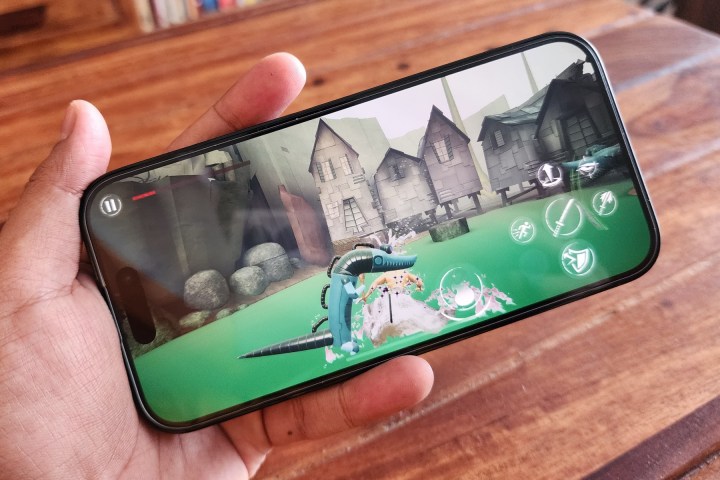
For fans of action-adventure games, Castlevania: Grimoire of Souls and Samurai Jack: Battle Through Time offer a great mix of fluidic controls, eye-catching cutscenes, beautifully designed worlds, and of course, an unbeatable sense of familiarity with two classic franchises.
If you live and breathe Zelda, Oceanhorn 2: Knights of the Lost Realms will keep you hooked for hours. This is another beautifully animated game with an immersive open-world design, smooth combat mechanics, engaging (albeit a bit predictable) story, and rewarding boss battles. The game is also available on Nintendo Switch, but if you have a gaming controller like those offered by Gamesir, this game will keep you busy for a few hours.
GRIS+, FANTASIAN, Star Trek: Legends, LEGO Star Wars: Castaways, and Warped Kart Racers are a few other Apple Arcade titles that are a hell of a lot of fun to play on the phone. But yet again, the poor thermal management spoils some of that fun.
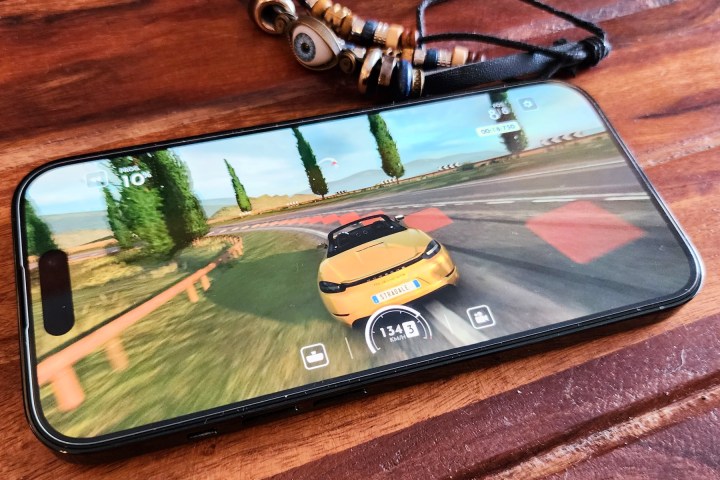
Compared to the non-Arcade titles, Apple Arcade games fare better at maintaining frame rate stability and battery consumption, but they still cause heating. The screen gets dim after a while, and you really need to set the iPhone 14 Pro aside to let it cool down.
The iPhone 14 Pro is almost a gaming legend
Is the iPhone 14 Pro a better gaming phone than Android flagships? Maybe better than those enthusiast-class, Transformers-spawned “gaming phones” like the Asus ROG Phone 6? From a technical standpoint, no! But can the iPhone deliver a better gaming experience than most Android handsets? Yes, and the answer is Apple Arcade.
For all that raw firepower and the talk about metal gaming advancements, the A16 Bionic should be able to handle console-grade games without much effort. Theoretically, it could have, but it’s the undeservedly terrible thermal hardware that lets this fire-breather down.
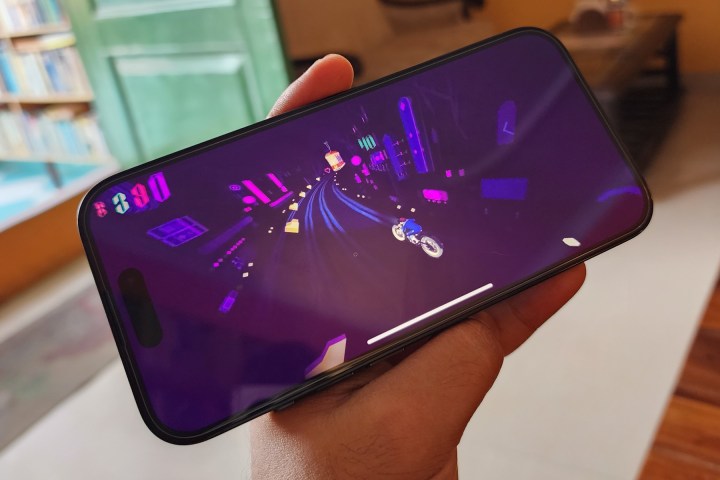
Maybe, Apple can seed a few updates to optimize the game performance so that the heating situation can be brought under control, even by a small margin. It’s hard not to feel bad about the unused potential here. For a chip as capable as the A16 Bionic, equally beefy thermal hardware could’ve added so much to the iPhone’s gaming creds.
That’s not at all to say the iPhone 14 Pro is a bad gaming smartphone. For casual and moderate gamers, there’s plenty of horsepower and quality games to keep you happy for years to come. But considering how many advancements we’ve seen with gaming handsets in the Android space — and the amount of potential Apple had at its disposal — it’s difficult to look at the iPhone 14 Pro’s gaming chops and not want something more.



